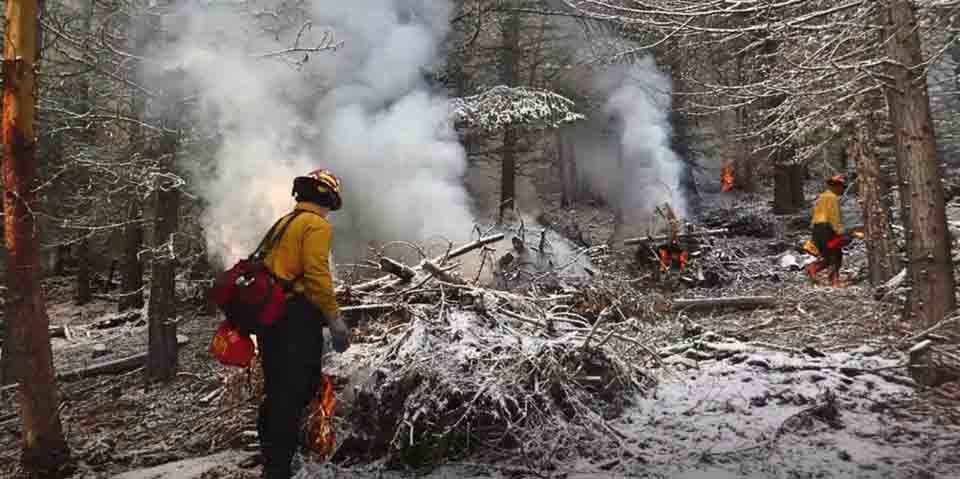University of Oregon Finds Wildfire Smoke Warnings Need Improvement

EUGENE, Ore. — College Officials from the Univerity of Oregon (UO) recently presented a study suggesting that warnings on wildfire smoke-choked air quality to the public often don’t reach residents until after the smoke has already swept into the area.
Published in a public health journal in February 2024, the UO researchers set out detailed recommendations in the study indicating how public institutions could communicate wildfire smoke and health risks better, giving the community time to prepare ahead of the smoke’s arrival. According to the researchers, over half of the wildfire-related tweets issued in 2022 by 32 institutional accounts were posted during peak levels of smoke, when exposure risk was at its highest.
Of the 1,287 tweets analyzed, just one out of seven instructed and encouraged preparatory actions such as staying indoors, using at-home air purifiers, and wearing respirators. Air quality index labels were only included in 213 of all the tweets. These label how clean or polluted the air is, but just 64 of the tweets described risks by giving numeric data, for example, the percentage likelihood of a fire spreading, or the number of acres burning.
University Of Oregon Recommendations On Detecting Wildfire And Smoke Events
The recommendations for inclusion in communications by UO researchers for wildfire and smoke event communications include:
- Risk
- Likelihood
- Hazard severity
- Mitigation, which provides details such as:
- Describing the risk with numeric information and air quality index levels.
- Practicing community engagement to build community and resilience.
- Discussing wildfire and smoke risks outside of the fire season to build proactive public communications.
Cutting Edge Wildfire Detection Technology Development
The Department of Homeland Security has partnered with the Oregon Hazards Lab, piloting cutting-edge wildfire detection technology to develop the most advanced all-hazards, environmental, and ecosystem observing platform in the US. Combining artificial intelligence, multiple sensors, and fire detection cameras, algorithms for fire detection will provide increased situational awareness. This enables firefighters to quickly discover and find new ignitions, scale up resources where needed, and monitor fire behavior from start to end.
To detect wildfires through changes in air quality and particulate matter, field technicians are installing wildfire smoke sensors throughout the Willamette Valley. Developed through the Department of Homeland Security’s Smart Cities Internet of Things Innovation (SCITI) Labs by Breeze Technologies and N5 Sensors, the sensors in the Willamette Valley will be a field test of this and other wildfire detection technologies. SCITI Labs hopes that real-time smoke sensors can ultimately be used not just to detect and track fires, but also to provide geographically targeted alerts.
A postdoctoral researcher at UO’s Center for Science Communication Research, Catherine Slavik, said that the institutions are doing a good job highlighting risks when they are present, but hopes that more conversations on smoke will be, “before it’s potentially already in the air and too late to prepare.”
